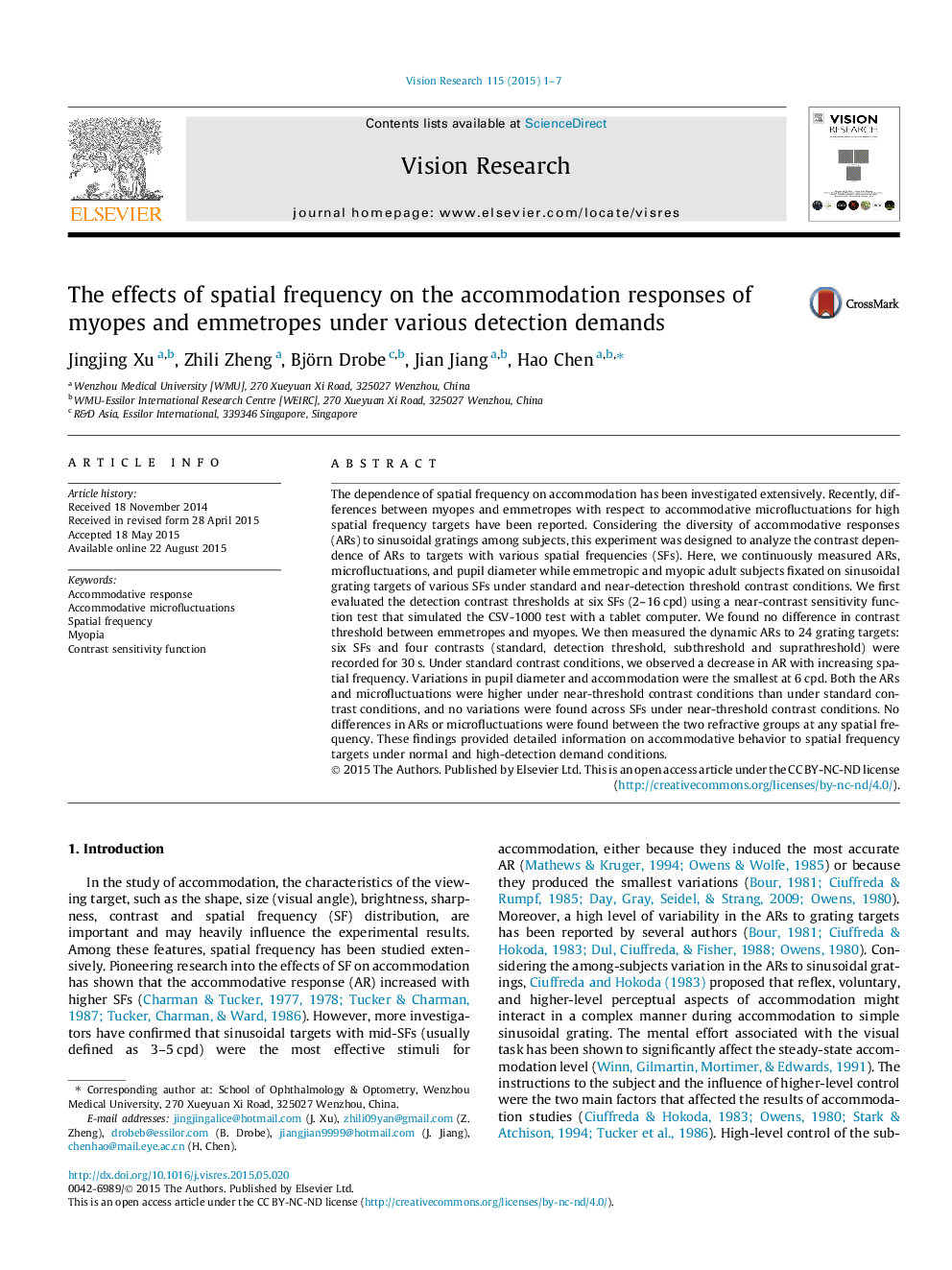| Article ID | Journal | Published Year | Pages | File Type |
|---|---|---|---|---|
| 6203122 | Vision Research | 2015 | 7 Pages |
â¢Accommodative responses (ARs) were most stable for medium frequencies.â¢ARs decreased with the increase of spatial frequency (SF).â¢Under threshold contrast conditions, ARs increased and were not SF dependent.â¢Pupil microfluctuations were correlated to microfluctuations of accommodation.
The dependence of spatial frequency on accommodation has been investigated extensively. Recently, differences between myopes and emmetropes with respect to accommodative microfluctuations for high spatial frequency targets have been reported. Considering the diversity of accommodative responses (ARs) to sinusoidal gratings among subjects, this experiment was designed to analyze the contrast dependence of ARs to targets with various spatial frequencies (SFs). Here, we continuously measured ARs, microfluctuations, and pupil diameter while emmetropic and myopic adult subjects fixated on sinusoidal grating targets of various SFs under standard and near-detection threshold contrast conditions. We first evaluated the detection contrast thresholds at six SFs (2-16Â cpd) using a near-contrast sensitivity function test that simulated the CSV-1000 test with a tablet computer. We found no difference in contrast threshold between emmetropes and myopes. We then measured the dynamic ARs to 24 grating targets: six SFs and four contrasts (standard, detection threshold, subthreshold and suprathreshold) were recorded for 30Â s. Under standard contrast conditions, we observed a decrease in AR with increasing spatial frequency. Variations in pupil diameter and accommodation were the smallest at 6Â cpd. Both the ARs and microfluctuations were higher under near-threshold contrast conditions than under standard contrast conditions, and no variations were found across SFs under near-threshold contrast conditions. No differences in ARs or microfluctuations were found between the two refractive groups at any spatial frequency. These findings provided detailed information on accommodative behavior to spatial frequency targets under normal and high-detection demand conditions.
